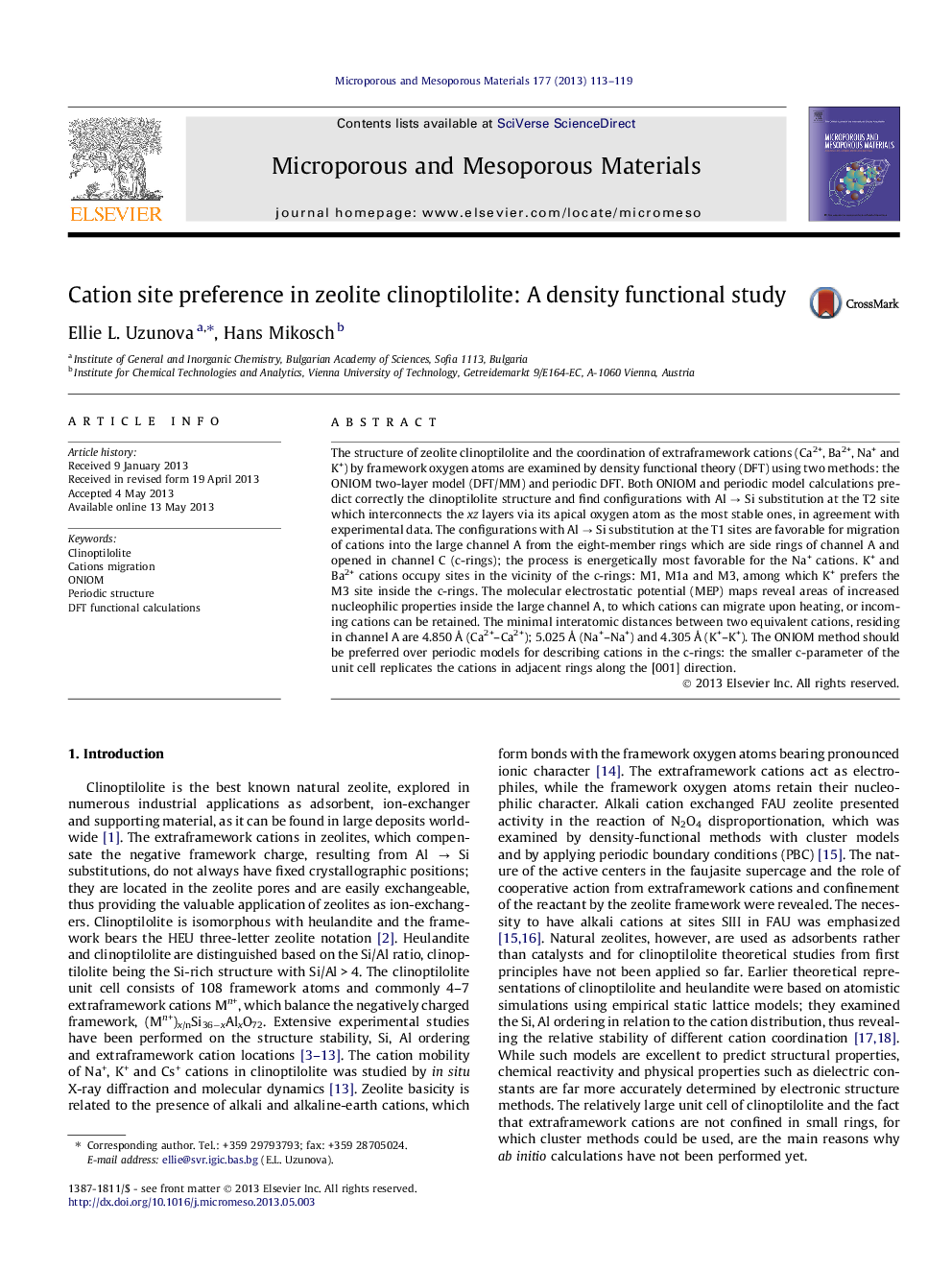| کد مقاله | کد نشریه | سال انتشار | مقاله انگلیسی | نسخه تمام متن |
|---|---|---|---|---|
| 73541 | 49063 | 2013 | 7 صفحه PDF | دانلود رایگان |

• Al → Si substitution at T1 sites favors cation migration to Channel A.
• Molecular electrostatic maps reveal strong nucleophilic regions in Channel A.
• ONIOM represents more accurately the cation occupancy in c-rings than periodic DFT.
The structure of zeolite clinoptilolite and the coordination of extraframework cations (Ca2+, Ba2+, Na+ and K+) by framework oxygen atoms are examined by density functional theory (DFT) using two methods: the ONIOM two-layer model (DFT/MM) and periodic DFT. Both ONIOM and periodic model calculations predict correctly the clinoptilolite structure and find configurations with Al → Si substitution at the T2 site which interconnects the xz layers via its apical oxygen atom as the most stable ones, in agreement with experimental data. The configurations with Al → Si substitution at the T1 sites are favorable for migration of cations into the large channel A from the eight-member rings which are side rings of channel A and opened in channel C (c-rings); the process is energetically most favorable for the Na+ cations. K+ and Ba2+ cations occupy sites in the vicinity of the c-rings: M1, M1a and M3, among which K+ prefers the M3 site inside the c-rings. The molecular electrostatic potential (MEP) maps reveal areas of increased nucleophilic properties inside the large channel A, to which cations can migrate upon heating, or incoming cations can be retained. The minimal interatomic distances between two equivalent cations, residing in channel A are 4.850 Å (Ca2+–Ca2+); 5.025 Å (Na+–Na+) and 4.305 Å (K+–K+). The ONIOM method should be preferred over periodic models for describing cations in the c-rings: the smaller c-parameter of the unit cell replicates the cations in adjacent rings along the [001] direction.
Figure optionsDownload as PowerPoint slide
Journal: Microporous and Mesoporous Materials - Volume 177, 1 September 2013, Pages 113–119